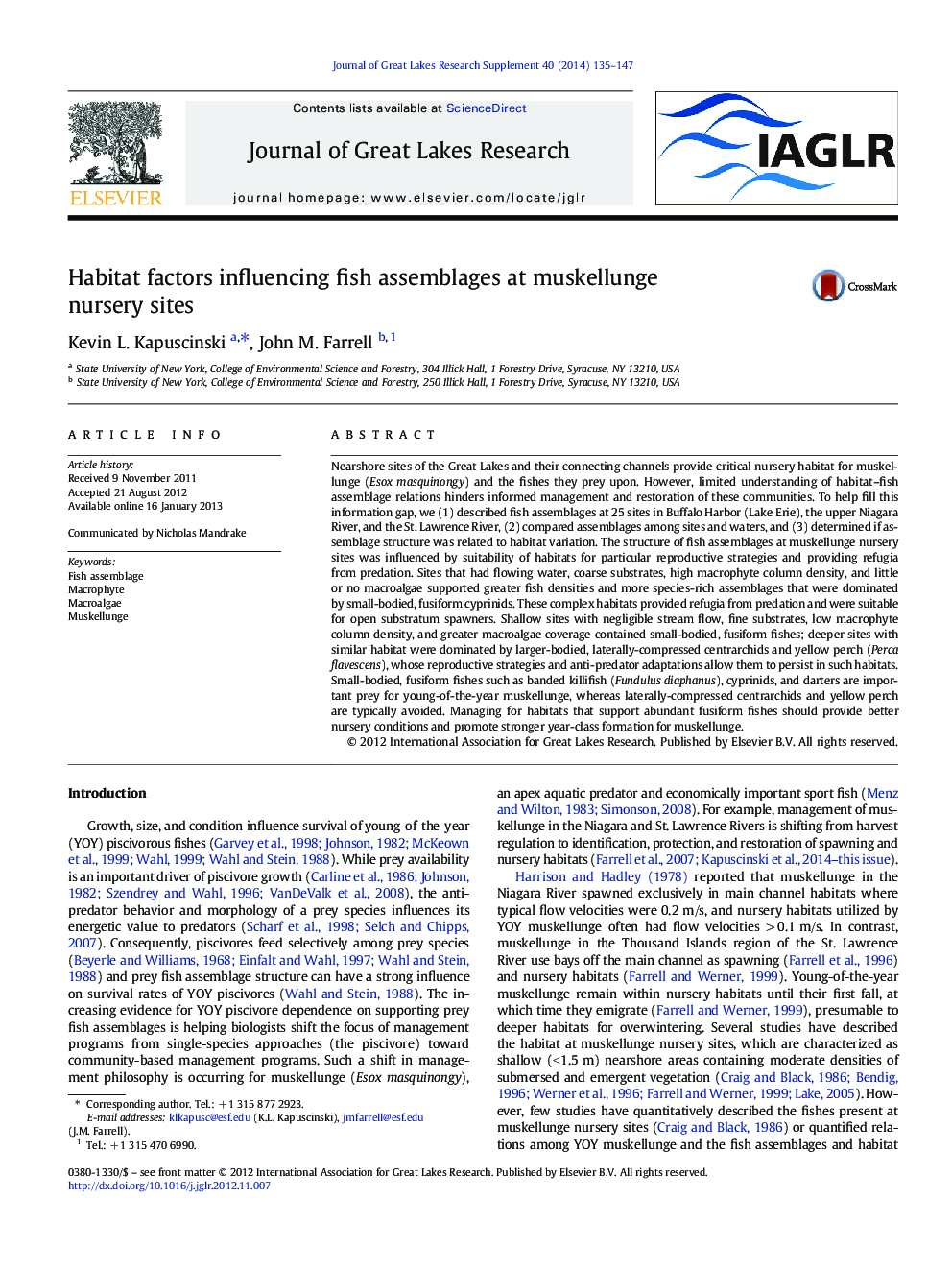| کد مقاله | کد نشریه | سال انتشار | مقاله انگلیسی | نسخه تمام متن |
|---|---|---|---|---|
| 4398435 | 1306690 | 2014 | 13 صفحه PDF | دانلود رایگان |
Nearshore sites of the Great Lakes and their connecting channels provide critical nursery habitat for muskellunge (Esox masquinongy) and the fishes they prey upon. However, limited understanding of habitat–fish assemblage relations hinders informed management and restoration of these communities. To help fill this information gap, we (1) described fish assemblages at 25 sites in Buffalo Harbor (Lake Erie), the upper Niagara River, and the St. Lawrence River, (2) compared assemblages among sites and waters, and (3) determined if assemblage structure was related to habitat variation. The structure of fish assemblages at muskellunge nursery sites was influenced by suitability of habitats for particular reproductive strategies and providing refugia from predation. Sites that had flowing water, coarse substrates, high macrophyte column density, and little or no macroalgae supported greater fish densities and more species-rich assemblages that were dominated by small-bodied, fusiform cyprinids. These complex habitats provided refugia from predation and were suitable for open substratum spawners. Shallow sites with negligible stream flow, fine substrates, low macrophyte column density, and greater macroalgae coverage contained small-bodied, fusiform fishes; deeper sites with similar habitat were dominated by larger-bodied, laterally-compressed centrarchids and yellow perch (Perca flavescens), whose reproductive strategies and anti-predator adaptations allow them to persist in such habitats. Small-bodied, fusiform fishes such as banded killifish (Fundulus diaphanus), cyprinids, and darters are important prey for young-of-the-year muskellunge, whereas laterally-compressed centrarchids and yellow perch are typically avoided. Managing for habitats that support abundant fusiform fishes should provide better nursery conditions and promote stronger year-class formation for muskellunge.
► Fish assemblage structure at 25 sites varied along habitat gradients.
► Suitability of habitats for reproductive strategies influenced assemblage structure.
► Presence of refugia from predation influenced assemblage structure.
► Habitat characteristics related to optimal prey assemblages are identified.
Journal: Journal of Great Lakes Research - Volume 40, Supplement 2, 2014, Pages 135–147
